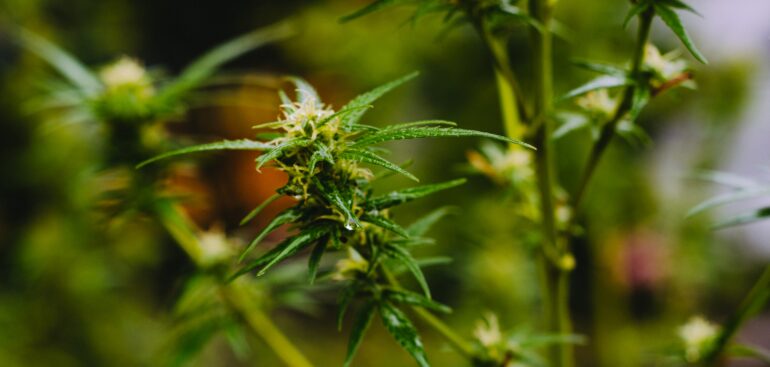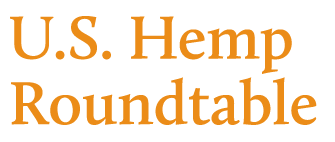Latest
Farm Bill Extension Leaves Opportunities and Hurdles For the Hemp Industry
PanXchange Blog
2020 has been both a year of dynamic transition and reset for the hemp industry. The market is experiencing fundamental changes as the 2020 crop, albeit in much smaller volumes compared to 2019, enters the market while hemp producers and processors work on plans to process hemp to create consumer goods. Simultaneously, hemp producers are watching both Federal and state announcements for clues on how the government will move forward with hemp production. Last week, in somewhat unexpected fashion, a continuing resolution authorized by the House and passed by the Senate extended the pilot program phase to Oct. 31, 2021. We have seen 14 states submit plans to comply with the USDA Hemp Production rules during this period, while another 35 states decided to continue practices set forth under the 2014 Farm Bill and hemp production Pilot Programs. The news to extend the deadline was unexpected and immense pressure resulted from concerns about sampling and testing procedures, specifically regarding the DEA’s involvement, what part of the plant is tested, and the 15-day window to complete testing name a few regulatory hurdles identified with the USDA program. As with many things in the hemp industry, regulations can change at a moment’s notice. At this point, assessing what these points of contention are and how they will shape the market going forward will highlight key trends to watch over the next twelve months. This extension does not have a fundamental impact on states with an authorized plan or deferred to the USDA.
Hemp production rules are in a state of flux, and many states have unique nuances associated with the pilot program rules that govern 35 states and the list of states that subscribe to the USDA plan. Although aggregating the entirety of the hemp producing community under one set of regulations will increase efficiency within the hemp industry, the USDA hemp production rules have brought on significant amounts of uncertainty, especially within states that have grown hemp several years. More specifically, the DEA testing hemp samples is a daunting proposition that has garnered significant industry pushback. The 2018 Farm Bill declassified as a Schedule 1 substance; thus, hemp products should not be under the purview of the government agency whose history with cannabis creates a tendency for overregulation, rather than supporting commercialization. Furthermore, the DEA accredited testing laboratory network is limited as 47 labs across the country currently meet the criteria, creating an unintentional bottleneck that will impact the industry come harvest of the 2021 crop. The limited availability of DEA accredited labs coupled with the 15-day window to complete tests prior to harvest exacerbates the potential bottleneck. DEA and ISO-accredited labs have no qualitative differences between them in terms of accurately testing cannabinoid potencies. If current rules are not amended to include all ISO-accredited labs who can then report results to the DEA or do away with the DEA’s involvement in pre-harvest testing, the supply chain will suffer. Furthermore, the availability of testing combined with the limited 15-day window to complete the tests will add to the post-harvest testing bottleneck creating large headwinds for the industry going forward.
The above rules create an environment in which hemp producers are apprehensive about participating in the market over fears of legal ramifications. Although market conditions stemming from the supply glut that hit the market in 2019 have contributed to a smaller harvest, the impending rules certainly have played a role in discouraging prospective hemp producers as well. While addressing these issues, this topic is one that state officials like Cory Gardner of Colorado have released public statements asking the USDA to extend the pilot program while these issues are addressed. In this document, Senator Gardner stated, “I encourage you (USDA) to delay the final implementation of the IFT and work directly with state regulators and the industry to ensure workable rules that allow the industry to thrive.”
Although it comes as welcome news to the industry that states will be allowed to extend pilot programs, this decision’s gravity is illustrated by what states are growing hemp. As well as, the quantities produced are deduced through acres planted and whether the specific state is producing under the USDA hemp production rules or a pilot program. We associated data aggregated from the FSA Crop Acreage report, combined with internal data from PanXchange. Over 93% of acres grown in the US during the 2020 crop year were with a pilot program while a USDA hemp production program governed less than 7%. The heavily weighted statistic favors producing under a pilot program due to power-producing states like Colorado, Oregon, Tennessee, Montana, and Kentucky. However, it illustrates that the difference in production rules has impacted the industry’s growth in select states. Furthermore, the significant split highlights the importance of creating rules that ensure federal laws’ compliance and do not hinder industry progression.
One somewhat overlooked situation that could play a part in the industry dialogue moving forward concerns transportation. The news of hemp logistics resulting in unwarranted arrests and product seizure has not been prevalent in the news as frequently as it was in 2019. Extending the pilot programs allows states to operate under different rule sets, increasing the amount of time where a product is technically legally produced in one state and illegal in another. For example, a processor in a state that follows the USDA hemp production ruleset wants to purchase a product from a pilot program state as supply is heavily concentrated in that group. The different rulesets could impact both sides of the trade to comply with all regulations. This situation also impacts shipments that are simply passing through states with more stringent rules, further complicating the products’ movement within the US.
In conclusion, the decision to extend the pilot programs allows industry stakeholders, state and federal legislators the opportunity to come to a common ground on hemp regulations. Suppose they push the deadline back a year. In that case, conversations will center around addressing contentious agenda items such as testing procedures and the penalties associated with producing a hemp crop that violates the federal 0.3% THC to create an environment for the US hemp industry to flourish. Given the heavily concentrated hemp farming community in areas currently governed by pilot programs, it only extenuates this decision’s gravity. The industry applauds it as the finalized rules will determine the industry’s long-term trajectory going forward. However, the extension of not having a single ruleset to govern all 50 state’s hemp production will spell another year of uncertainty for the industry until written in stone.









